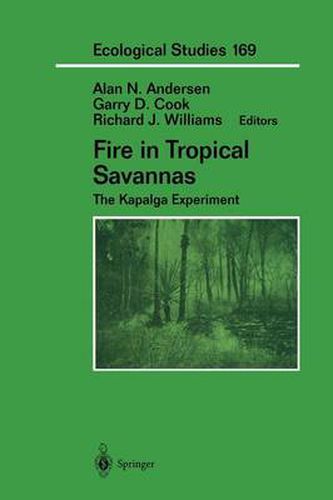Readings Newsletter
Become a Readings Member to make your shopping experience even easier.
Sign in or sign up for free!
You’re not far away from qualifying for FREE standard shipping within Australia
You’ve qualified for FREE standard shipping within Australia
The cart is loading…






This title is printed to order. This book may have been self-published. If so, we cannot guarantee the quality of the content. In the main most books will have gone through the editing process however some may not. We therefore suggest that you be aware of this before ordering this book. If in doubt check either the author or publisher’s details as we are unable to accept any returns unless they are faulty. Please contact us if you have any questions.
Fire is a major agent of disturbance in many biomes of the world but is a particularly important feature of tropical savannas. Up to 50% of the ext- sive tropical savanna landscapes of northern Australia are burnt each year. This includes prestigious conservation reserves such as World Heritage- listed Kakadu National Park, in the Top End of the Northern Territory. As in other savanna regions of the world, the responses of biota to different ?re regimes are poorly understood, such that ?re management represents one of the greatest challenges to conservation managers and researchers alike. This is the context within which a landscape-scale ?re experiment was established at Kapalga Research Station in Kakadu,which aimed to provide a sound scienti?c basis for conservation management in the region. The experiment was established by The Australian Commonwealth Scienti?c and Industrial Research Organization (CSIRO),but involved collaborators from a range of universities and government agencies, including the m- agers of Kakadu,the Australian Nature Conservation Agency (ANCA:now Parks Australia North). This book summarizes the ?ndings from the Kapalga ?re experiment and explores the implications for conservation management. We believe that Kapalga has provided important insights into the ?re ecology of tropical savannas and has broad relevance for the conservation management of ?- prone landscapes in general. This book should be of interest to researchers, graduate students, and land management agencies. vii viii Preface We are extremely grateful to all our collaborators,both inside and outside CSIRO, for their involvement in the Kapalga experiment.
$9.00 standard shipping within Australia
FREE standard shipping within Australia for orders over $100.00
Express & International shipping calculated at checkout
This title is printed to order. This book may have been self-published. If so, we cannot guarantee the quality of the content. In the main most books will have gone through the editing process however some may not. We therefore suggest that you be aware of this before ordering this book. If in doubt check either the author or publisher’s details as we are unable to accept any returns unless they are faulty. Please contact us if you have any questions.
Fire is a major agent of disturbance in many biomes of the world but is a particularly important feature of tropical savannas. Up to 50% of the ext- sive tropical savanna landscapes of northern Australia are burnt each year. This includes prestigious conservation reserves such as World Heritage- listed Kakadu National Park, in the Top End of the Northern Territory. As in other savanna regions of the world, the responses of biota to different ?re regimes are poorly understood, such that ?re management represents one of the greatest challenges to conservation managers and researchers alike. This is the context within which a landscape-scale ?re experiment was established at Kapalga Research Station in Kakadu,which aimed to provide a sound scienti?c basis for conservation management in the region. The experiment was established by The Australian Commonwealth Scienti?c and Industrial Research Organization (CSIRO),but involved collaborators from a range of universities and government agencies, including the m- agers of Kakadu,the Australian Nature Conservation Agency (ANCA:now Parks Australia North). This book summarizes the ?ndings from the Kapalga ?re experiment and explores the implications for conservation management. We believe that Kapalga has provided important insights into the ?re ecology of tropical savannas and has broad relevance for the conservation management of ?- prone landscapes in general. This book should be of interest to researchers, graduate students, and land management agencies. vii viii Preface We are extremely grateful to all our collaborators,both inside and outside CSIRO, for their involvement in the Kapalga experiment.